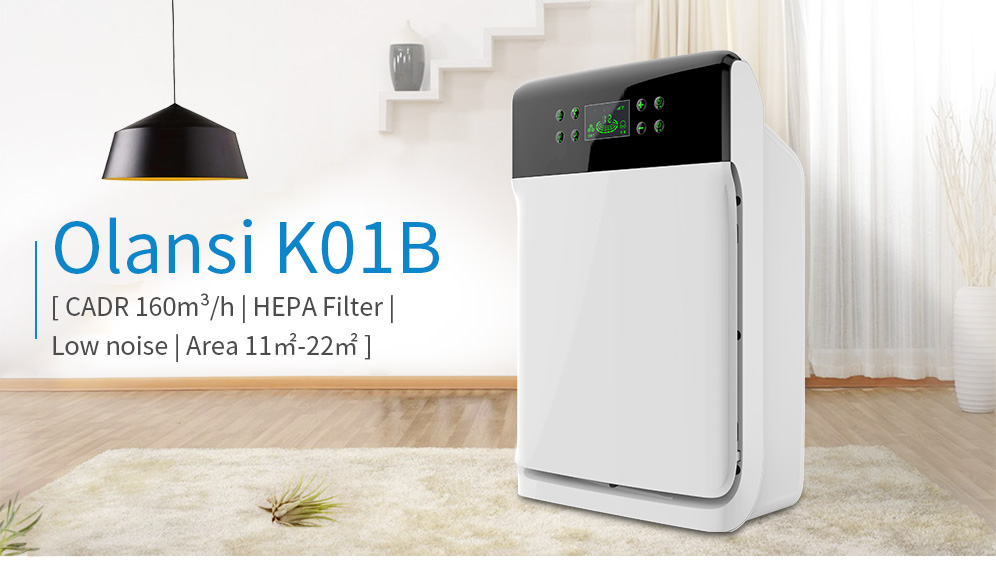Indoor pollution is more serious than outdoor! These two types of people hurt the most

‘In the past, everyone always blamed environmental pollution on industrial production and transportation vehicles. In fact, there are data showing that industrial pollution accounts for 41%, while indoor pollution is as high as 59%.’ The average person only spends 8% of the time outdoors, and It usually takes no more than two hours, and most of the time is indoors. The severity of indoor pollution is underestimated!
Indoor pollution is more scary than outdoor
In 2016, the ‘China Population Environmental Exposure Behavior Research Report (Children’s Volume)’ issued by the Ministry of Environmental Protection of China pointed out that nearly 30% of children are threatened by indoor air pollution. Compared with adults, children are more vulnerable to indoor air pollution, and the harm to the body should be taken seriously!
‘The investigation of related preventive medicine departments concluded that the high incidence of respiratory diseases in autumn and winter is related to indoor air quality. Asthma can be induced by air pollution, and diseases spread by droplets such as influenza and tuberculosis are related to indoor ventilation and pollution.’ Professor Li Qiang Point out.
Indoor air pollution, especially for children and pregnant women.
No.1 affects infant and child health
Compared with outdoor, indoor air pollution needs more attention. Children’s long-term inhalation of formaldehyde and other pollutants can cause rhinitis, cough, asthma, dyspnea and other tracheal and lung diseases, but also cause children’s immunity, skin allergies, redness, gastrointestinal disorders.
In addition, reports of neonatal or young children infected with leukemia due to housing renovation are not uncommon. Although it is impossible to directly prove the direct connection between the two, indoor pollution has great health risks for children’s growth. Long-term inhalation of formaldehyde and PM2.5 can significantly increase the incidence of asthma and allergic cough in children.
Indoor pollution can also affect a child’s height and mental health. Children’s body is in the critical period of growth and development. Long-term inhalation of air polluted by smoke, harmful gases and pathogenic viruses is not only easy to induce respiratory diseases, but also causes children’s body functions to be chronically affected, thus affecting normal height and intelligence. development.
No.2 affects the health of pregnant women and the fetus
Pregnancy is a process of fetal development, accompanied by massive proliferation of cells, formation and development of organs. Moreover, the fetus has limited metabolic capacity and is highly susceptible to contaminants. In addition, during pregnancy, women often have limited outdoor activities, further increasing the degree of harm to indoor air pollutants.
Three main indoor pollution sources, be careful!
No.1 formaldehyde
‘A US survey shows that 65% of children with different degrees of asthma are caused by decoration pollution.’ Professor Li Qiang pointed out that among the volatile compounds emitted by decoration materials, formaldehyde is the most harmful to human health, and formaldehyde is mainly from The glue in the composite wood building material is generally used in the deep place of the artificial board, and the formaldehyde volatilization rate is slow. Not just a new home, even after many years of renovation, there may be cases of formaldehyde precipitation.
No.2 benzene
Unlike formaldehyde, benzene, which is also derived from decoration materials, has a very high volatility. After the renovation of a new house, benzene will quickly evaporate and will not be released slowly and slowly like formaldehyde.
Benzene is often used in large quantities as an organic solvent and binder, which can induce leukemia and aplastic anemia. Long-term exposure can cause neurasthenia and affect the female reproductive system.
No.3 PM2.5
In addition to the pollution caused by the decoration materials, some indoor pollution is caused by humans, such as indoor smoking, indoor smoking can cause the PM2.5 value to increase by 12 times.
6 strokes let the family breathe quickly
1 .Home improvement should be environmentally friendly: the decoration is simple, even if it uses environmentally friendly materials.
2. smoke does not enter the door: after going home, you must change your clothes and wash your face. After smoking, smoke particles can remain on clothing, furniture and skin for a long time, including some carcinogenic compounds. Contact with children may affect their health, especially if the child’s immune system is inherently vulnerable.
3.Don’t bring pathogens: When going out home, especially from crowded places, such as hospitals and train stations, the first thing is to do cleaning and reduce the chance of bringing the pathogen to the child.
4. Indoor ventilation: In autumn and winter, people often close the door and close the window because of wind and low temperature, which causes a large amount of pollutants to collect. It is recommended that the autumn and winter seasons should also be opened regularly to allow fresh air to come in.
5. Flood prevention should be in place: Regular removal is important, focusing on the cleaning of sheets, duvet covers and pillowcases. In addition to the use of bed vacuum cleaners, mites and so on.
6. Air purification: The use of air purifier can reduce the chance of respiratory infection to a certain extent, reduce the hair, dust, pm2.5, formaldehyde, bacteria and other harmful substances in the home, and protect human health.
If you are interested in this, please contact us for more products and preferential prices
Helen:
+86 13922346046
info@olansiglobal.com
https://www.olansiglobal.com
